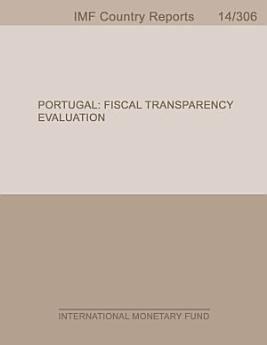Portugal: Fiscal Transparency Evaluation
International Monetary Fund. Fiscal Affairs Dept.
oct 2014 · International Monetary Fund
eBook
83
Páginas
reportLas valoraciones y las reseñas no se verifican. Más información
Información sobre este eBook
EXECUTIVE SUMMARY Portugal’s practices meet most of the principles of the revised Fiscal Transparency Code at good or advanced levels. A number of areas still present practices at a basic level, but in most of these cases this reflects reforms that have recently been launched and have not yet been fully implemented so as to affect current practices. Indeed, if measured against the practices observed prior to the recent financial crisis, there has been remarkable progress. The challenge is to press ahead with the reform agenda so that all fiscal transparency practices meet good or advanced levels, thus strengthening even further the management of public finances and the associated risks. The key findings of the present Fiscal Transparency Evaluation are: • Fiscal reporting is in line with good or advanced practices, particularly in compliance with EU requirements and ESA 95 standards, but still lacks a sound conceptual accounting framework based on internationally accepted standards. • Fiscal forecasting and budgeting have improved over the last three years, although investment evaluation only meets the basic standard of the Code. • Reporting of fiscal risks is in its infancy and in spite of numerous initiatives undertaken in the last few years, such as the publication of a fiscal risk statement, remains fragmented. The large amount and good quality of information available allows a very preliminary and partial estimate of the public sector net worth and total risk exposure. An estimated negative net worth position of 140 percent of GDP (including the liabilities of the main defined-benefits employment-related pension scheme) and a sizeable exposure to various contingent liabilities, although some of these have a low probability of crystallizing, are reminders of the still fragile status of Portugal’s public finances.
Valorar este eBook
Danos tu opinión.
Información sobre cómo leer
Smartphones y tablets
Instala la aplicación Google Play Libros para Android y iPad/iPhone. Se sincroniza automáticamente con tu cuenta y te permite leer contenido online o sin conexión estés donde estés.
Ordenadores portátiles y de escritorio
Puedes usar el navegador web del ordenador para escuchar audiolibros que hayas comprado en Google Play.
eReaders y otros dispositivos
Para leer en dispositivos de tinta electrónica, como los lectores de libros electrónicos de Kobo, es necesario descargar un archivo y transferirlo al dispositivo. Sigue las instrucciones detalladas del Centro de Ayuda para transferir archivos a lectores de libros electrónicos compatibles.








